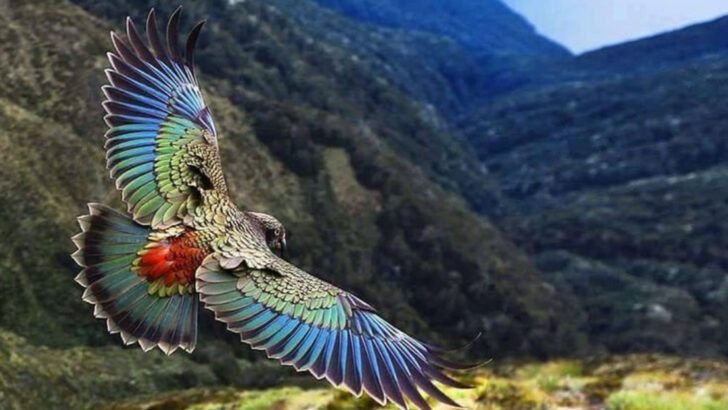Some birds look like they crash-landed from outer space. We’re talking neon feathers, heads shaped like helmets, beaks that spiral, and dances that belong in a sci-fi movie. These aren’t your backyard robins—they’re nature’s weirdest showstoppers. They don’t just fly. They strut, shimmer, puff up, and disappear into the forest like feathered phantoms. Every one of them looks like evolution went off-script… and we’re here for it. Meet 15 birds so strange, so dazzling, so downright alien, you’ll start to wonder if Earth is the only planet they’ve ever lived on.
Shoebill Stork
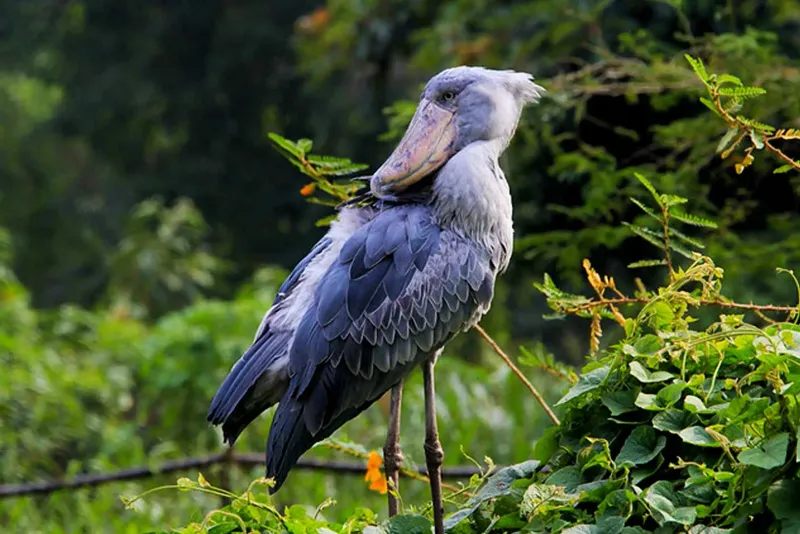
If you’ve ever wondered what a prehistoric bird might look like, meet the Shoebill Stork. With a bill resembling a shoe in both size and shape, this bird stands out in the wetlands of East Africa.
Its piercing stare and slow, deliberate movements add to its dinosaur-like allure. Often seen standing still for hours, waiting to snatch up prey, the Shoebill is both patient and precise.
Did you know? Their unique bill is perfect for catching lungfish, their favorite meal. A true marvel of nature!
Kea
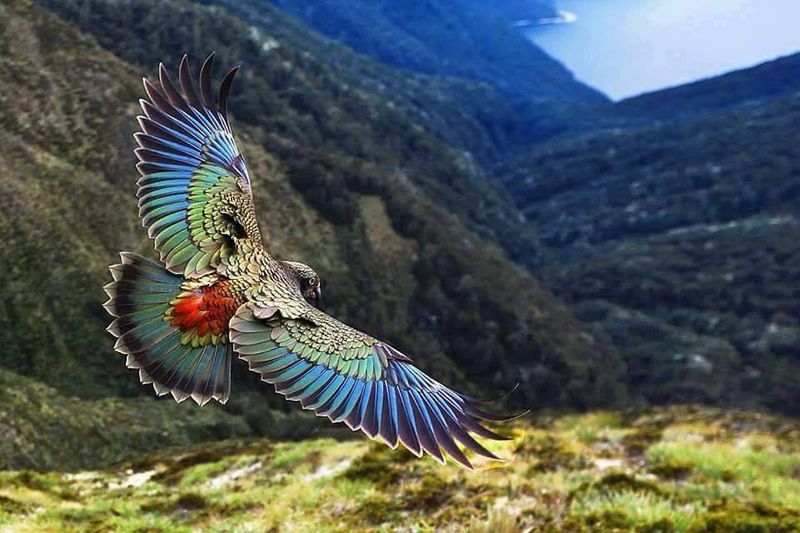
Known as the “clown of the mountains,” the Kea is a playful parrot native to New Zealand’s alpine regions. Its olive-green feathers with flashes of orange and red are striking, but it’s the Kea’s curious nature that truly sets it apart.
These birds are notorious for their intelligence and mischievous antics, often interacting with tourists and locals alike.
With their distinct cackling call, Keas have a reputation for dismantling anything in their path. It’s no wonder they are both loved and occasionally exasperating!
Resplendent Quetzal

In the cloud forests of Central America, the Resplendent Quetzal reigns supreme. Its shimmering green plumage and long, flowing tail feathers are the stuff of legends.
This bird has been a symbol of freedom and wealth for centuries. Its elusive nature and ethereal beauty make it a sought-after sight for birdwatchers.
Fun fact: The quetzal was sacred to the ancient Maya and Aztec civilizations. Witnessing one in flight is like glimpsing a piece of living art.
Secretary Bird
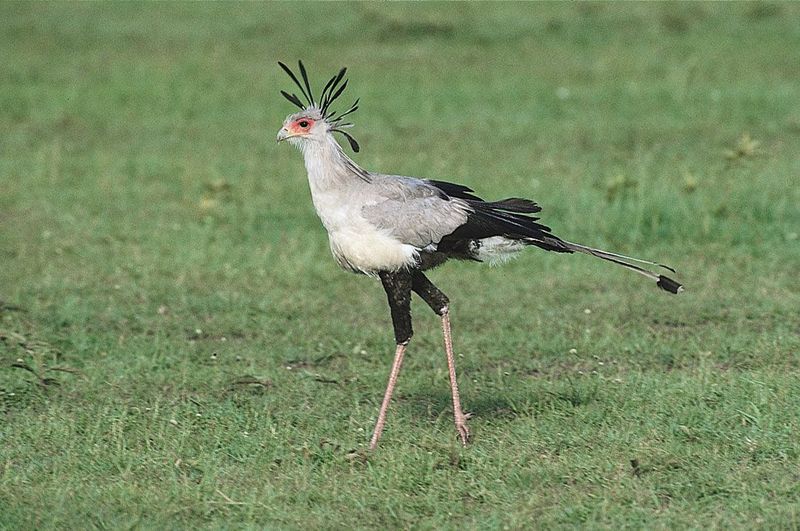
With legs like a stilt walker and the grace of a dancer, the Secretary Bird is a unique predator of the African savannas. Known for its distinctive appearance, this bird combines features of both raptors and cranes.
It hunts by stomping on its prey, a technique that is as effective as it is fascinating. Its striking black and white plumage, accentuated by long crest feathers, adds to its dramatic presence.
Curiously enough, its name comes from its quill-like feathers, reminiscent of the secretaries of old.
Hoatzin
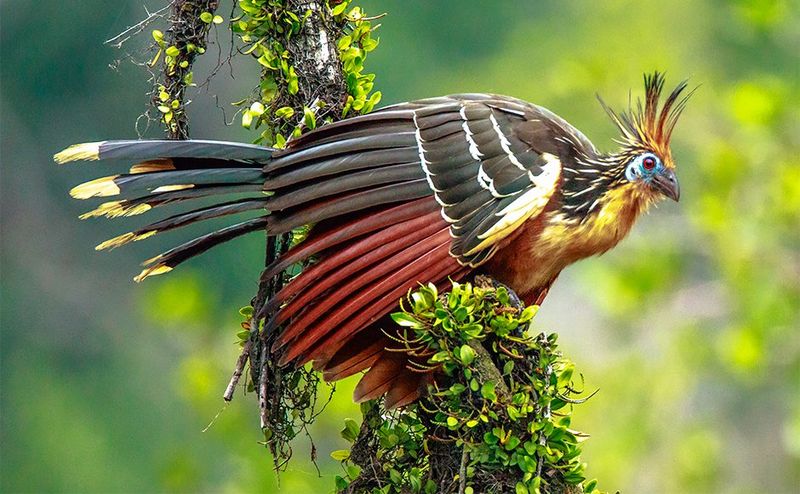
Looking every bit like a relic from the past, the Hoatzin of the Amazon is often referred to as the “stinkbird.” Its pungent odor, a byproduct of its unique digestive system, sets it apart.
With blue facial skin and red eyes, the Hoatzin’s appearance is as unusual as its scent. Remarkably, its chicks possess clawed wings, a throwback to ancient birds.
This quirky bird is a marvel, showcasing evolutionary traits that seem out of time. Its diet primarily consists of leaves, making it one of the few folivorous birds.
Lyrebird
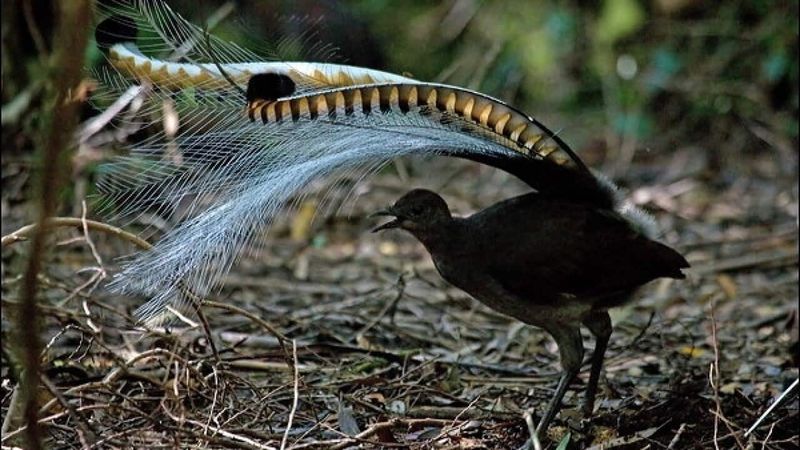
If you’ve ever been fooled by the sounds of chainsaws or camera shutters in the wild, a Lyrebird might be to blame. Known for its incredible mimicry, this Australian bird can imitate almost any sound it hears.
The male Lyrebird’s tail is equally impressive, shaped like a lyre and used in elaborate courtship displays.
Their talent for sound deception is legendary, capturing the imagination of many. It’s not just their visual splendor but their vocal prowess that makes Lyrebirds fascinating.
Puffin
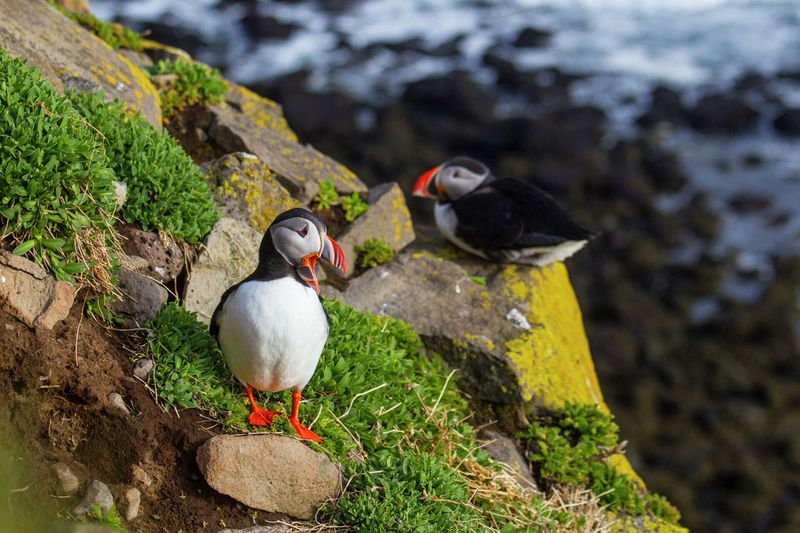
With its colorful beak and comical waddle, the Puffin is often dubbed the “clown of the sea.” These birds are a delight to watch as they dive skillfully into the ocean to hunt fish.
Their striking black and white plumage is complemented by a vivid orange beak, which becomes even brighter during breeding season.
Puffins are adept fliers and swimmers, making them versatile aviators of the North Atlantic. Their endearing appearance and charming behavior have made them a favorite among wildlife enthusiasts.
Kakapo

Imagine a parrot that can’t fly—meet the Kakapo, a nocturnal bird from New Zealand. With its mossy green feathers and owl-like face, the Kakapo is an endearing oddity.
It’s the heaviest parrot in the world and one of the longest-living. Sadly, this unique bird is critically endangered, with conservationists working tirelessly to protect it.
Kakapos are known for their ground-dwelling habits and distinctive booming calls during mating season. They embody both the fragility and resilience of nature.
Mandarin Duck
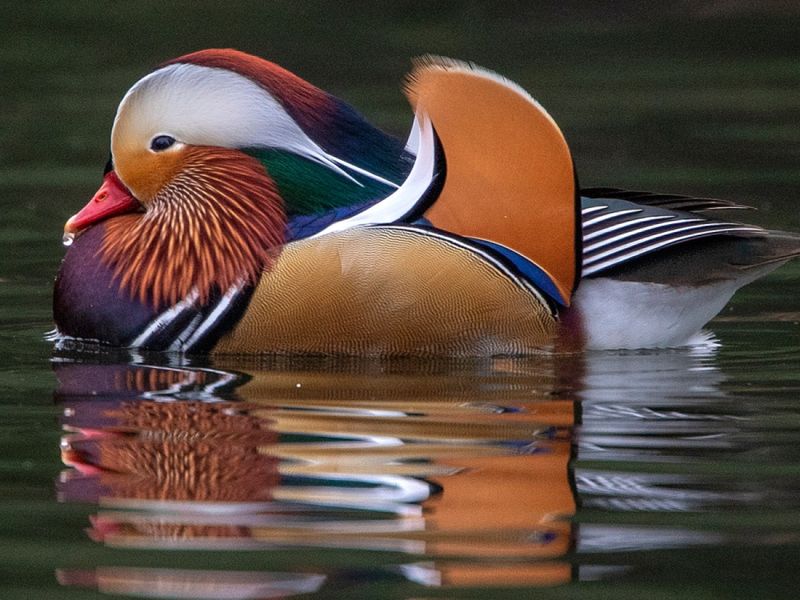
Among the world’s waterfowl, the Mandarin Duck stands out with its kaleidoscope of colors. Native to East Asia, it has become a symbol of love and fidelity in many cultures.
Males boast brilliant plumage with striking patterns, while females are more subdued yet equally elegant. Watching a Mandarin Duck glide across a pond is akin to observing a living piece of art.
These ducks thrive in wooded lakes and streams, adding a splash of color to any landscape. Their visual splendor is matched only by their graceful demeanor.
Greater Sage-Grouse
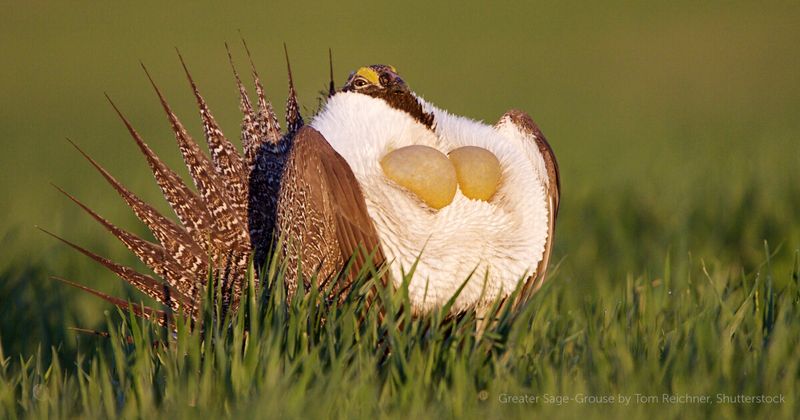
Witnessing a Greater Sage-Grouse’s mating dance is like attending a natural spectacle. Found in the sagebrush country of North America, these birds are famous for their elaborate courtship displays.
Males puff up their chests and fan their tail feathers, creating a mesmerizing sight. Their unique dance is accompanied by distinctive popping sounds, a crucial part of their mating ritual.
Unfortunately, habitat loss threatens their existence, making conservation efforts vital. Their dance is not just a show; it’s a testament to the intricate beauty of avian courtship.
Frigatebird
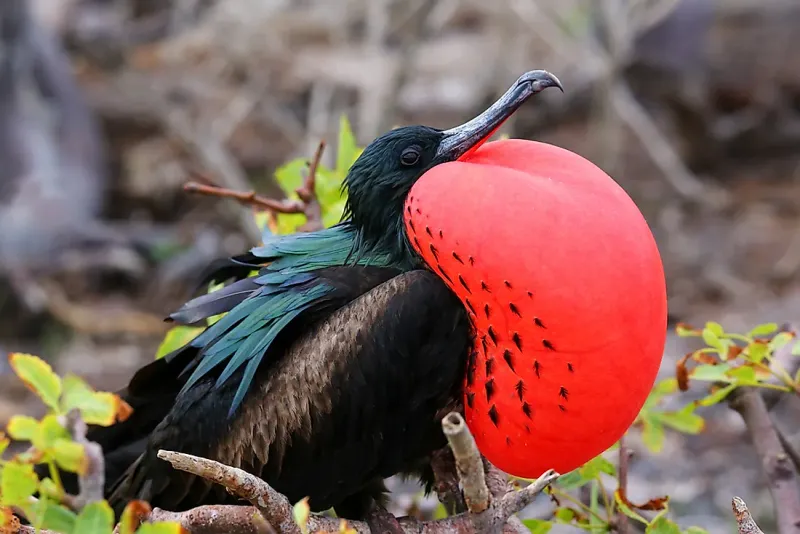
With wings spanning over two meters, the Frigatebird is a master of the skies. Known for their aerial prowess, these birds can glide gracefully for hours without flapping.
Males are particularly striking during mating season, inflating their bright red throat pouches to attract females. Their kleptoparasitic behavior, stealing food from other birds, adds to their mystique.
Frigatebirds are truly remarkable fliers, navigating tropical oceans with ease. Their presence in the skies is both commanding and awe-inspiring.
Rhinoceros Hornbill
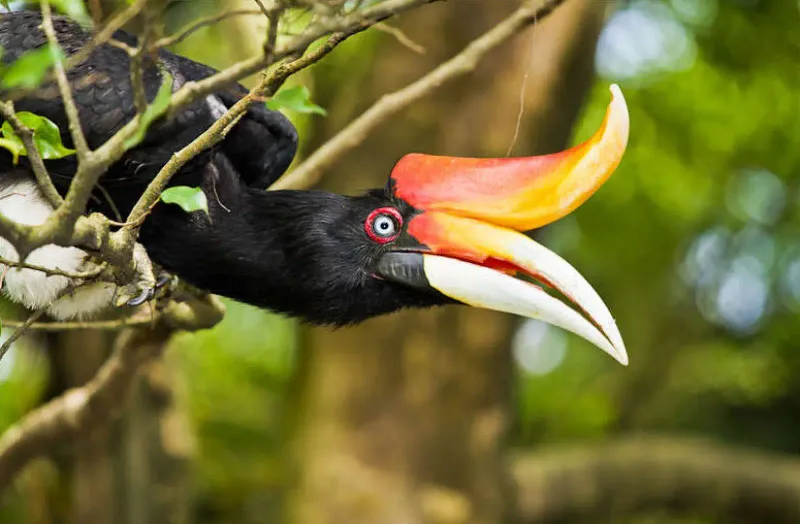
The Rhinoceros Hornbill, with its oversized casque atop its bill, resembles a creature from myth. Found in the rainforests of Southeast Asia, this bird is a symbol of strength and elegance.
The casque, used in courtship and territorial displays, is both functional and striking. Males and females work together in raising their young, showcasing strong family bonds.
These hornbills play a crucial role in their ecosystem, spreading seeds and maintaining forest health. Their presence is as vital as it is majestic.
Blue Jay
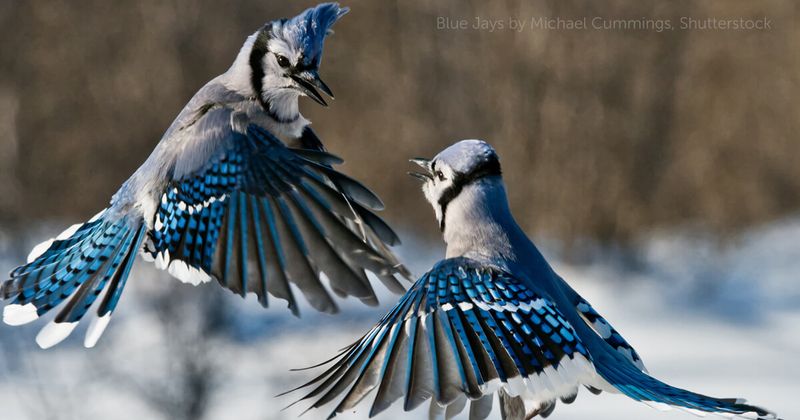
With its striking blue plumage and vibrant personality, the Blue Jay is a familiar sight in North American woodlands. Known for their intelligence and resourcefulness, these birds are excellent mimics and can even imitate the calls of hawks.
Blue Jays are social creatures, often seen in family groups or noisy flocks. Their penchant for collecting shiny objects and storing food for later is well-documented.
These birds are not only beautiful but vital to their habitats, often helping to plant oak trees by burying acorns. Their lively presence brings energy to any forest.
Andean Cock-of-the-rock
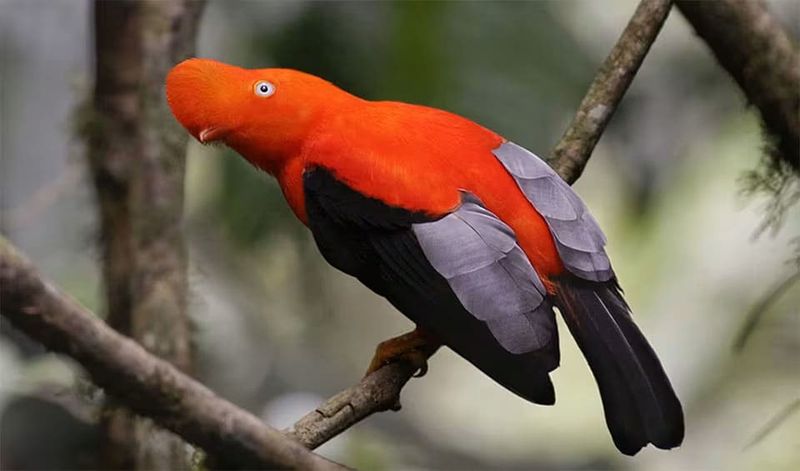
In the cloud forests of the Andes, the Andean Cock-of-the-rock is a sight to behold. Males sport vibrant orange plumage and unique fan-shaped crests, making them stand out even in dense foliage.
Their courtship rituals are as captivating as their appearance, with males performing elaborate displays to win the favor of females.
These birds are not just visually striking but play a role in their ecosystem as pollinators and seed dispersers. The Andean Cock-of-the-rock is a true testament to the splendor of nature.
Victoria Crowned Pigeon
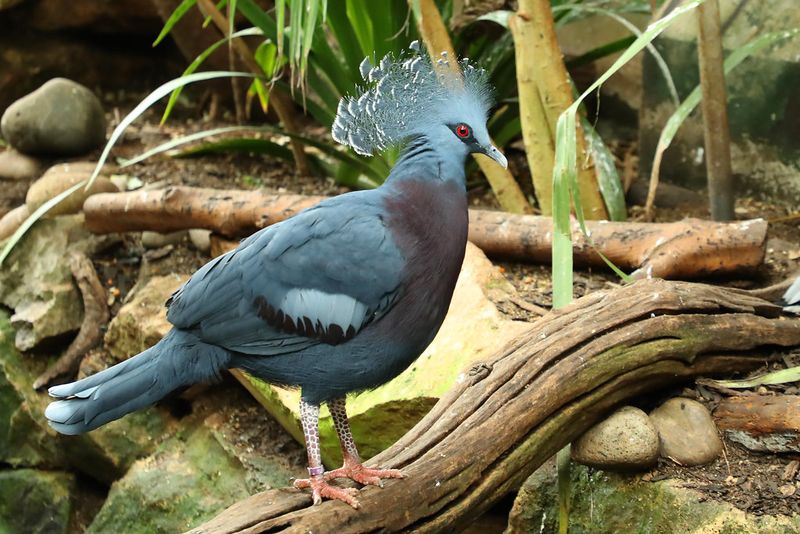
Considered the royalty of the pigeon family, the Victoria Crowned Pigeon boasts an elaborate crest reminiscent of a regal crown. Its striking blue and gray plumage, paired with vibrant red eyes, creates a mesmerizing spectacle. As it struts through the rainforest floor, its gentle cooing adds a melodic charm.
Unlike typical pigeons, this bird’s size rivals that of a turkey, making it one of the largest pigeons in existence. Its fascinating social behavior includes elaborate courtship dances, showcasing not just beauty but also grace. Truly, a bird that seems borrowed from a fairy tale realm.
Found primarily in New Guinea, this species faces threats from habitat loss and hunting. Conservation efforts are vital to ensure its continued enchantment for future generations.

